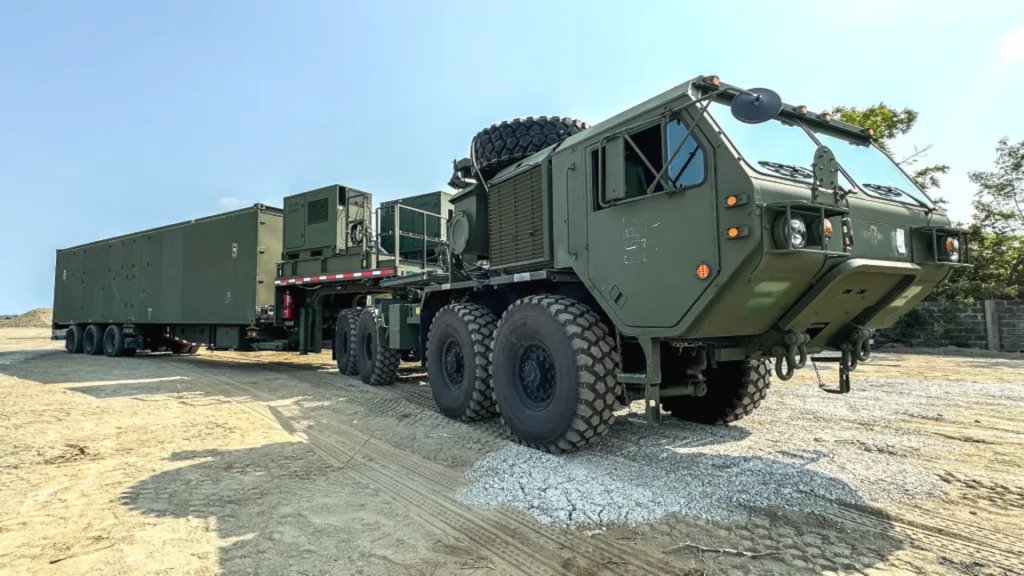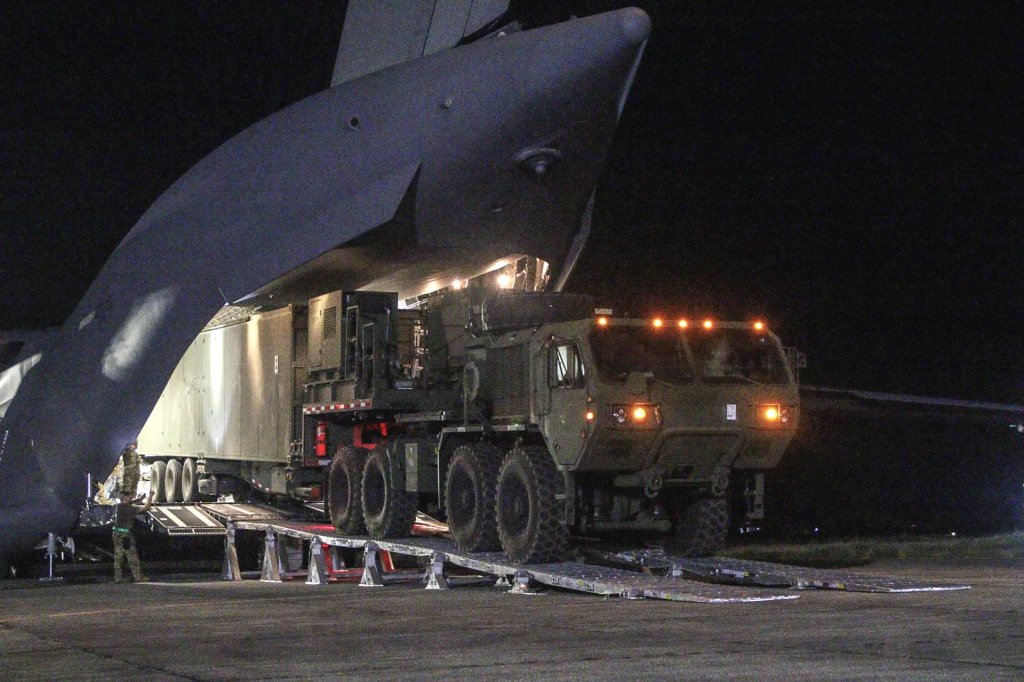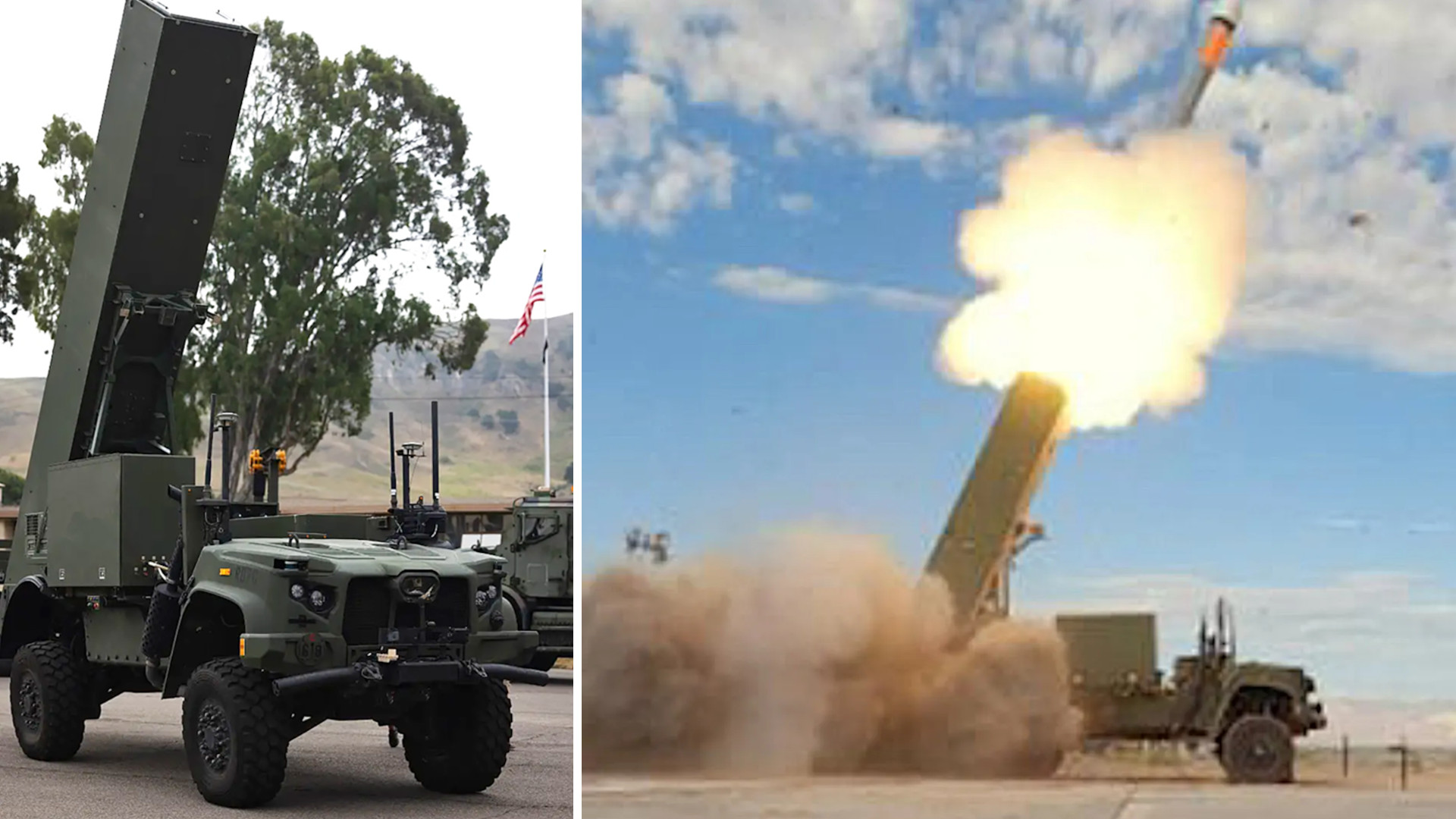The U.S. Army has expressed interest in the U.S. Marine Corps’ new uncrewed 4×4 Tomahawk cruise missile launch vehicle as a possible complement to its larger Typhon system, according to Lockheed Martin. The Army said last year that it was looking into ways to shrink down Typhon to help make it easier to deploy and operate based on lessons learned from its first overseas deployment to the Philippines. Typhon currently uses large tractor-trailer launchers to fire Tomahawks and SM-6 multi-purpose missiles.
Edward Dobeck, program director of Launching Systems at Lockheed Martin, discussed Typhon and the Marine Corps Tomahawk-slinging Long Range Fires (LRF) launch vehicle in an interview with TWZ‘s Howard Altman from the floor of last week’s Sea Air Space 2025 exhibition hosted by the Navy League. Lockheed Martin builds Typhon, also known as the Mid-Range Capability (MRC) and now the Strategic Mid-Range Fires (SMRF) system, and the launcher for the LRF. The launch components of both systems are based on the Mk 41 Vertical Launch System (VLS) used on various U.S. Navy and foreign warships. The trailer-based Typhon launchers have four launch cells, while the LRF has just one.

The LRF’s launcher is mounted on a Remotely Operated Ground Unit for Expeditionary Fires (ROGUE-Fires) vehicle from Oshkosh Defense, which is based on that company’s Joint Light Tactical Vehicle (JLTV). The Marine Corps has also fielded a version of ROGUE-Fires configured to fire Naval Strike Missile (NSM) anti-ship cruise missiles.

It’s worth noting here that Lockheed Martin has developed a fully containerized four-cell Mk 41-based launcher for the U.S. Navy that is extremely similar in form and function to the Typhon launchers. The Mk 70 Expeditionary Launcher, also known as the Payload Delivery System, can be readily installed on ships, as well as employed in a ground-based mode.
“There have been some discussions about how to maybe make it [Typhon] lighter,” Dobeck said. “There’s some interest from the Army and other services about that single-cell JLTV[-based launcher], as well, because it is a nice complement to the larger four-cell container that’s on a heavy truck.”

For the Army, Typhon does represent a major increase in long-range ground-based strike capability. The service currently has two Typhon batteries, each with four launchers and supporting assets, and is in the process of establishing a third one.
Loaded with Tomahawks, a Typhon battery gives the Army the ability to hold land-based targets at risk anywhere within a bubble extending roughly 1,000 miles in all directions from where it is deployed. Current versions of Tomahawk also have the ability to engage moving ships, and a further anti-ship optimized variant is in development.

Originally developed as a surface-to-air interceptor, SM-6 can also be employed against targets on land and at sea when fired in a ballistic mode. The Army has expressed separate interest in potentially employing SM-6 in the air and missile defense role, where they have a latent capability to engage threats moving at hypersonic speeds in the terminal phase of flight, as well.
“Right now, they’re [the Marines] acquiring Tomahawks for those [LRF launchers], but it’s the same size Mark 41 cell that is in a vertical launch system,” Lockheed Martin’s Dobeck said. What additional changes might be necessary to enable the LRF to fire SM-6, or other missiles already available for use with Mk 41 VLSs, is unclear.
“From an MRC [Typhon] standpoint, you can see what that is going on in the Philippines,” Dobeck added. “MRC provides a very strategic asset for [use from] the Philippines to be able to provide that capability in the region.”
Typhon has the ability to reach targets in mainland China from where it is currently positioned in the Philippines, which has drawn the ire of the Chinese government. The Philippine armed forces are also now looking to acquire the system for their own use.
“Then as that gets deployed to other areas across the Pacific, I think you’ll see that range and that strike capability that MRC provides come into play,” Dobeck added. The Army currently plans to conduct a live-fire launch from a Typhon system in Australia as part of this year’s iteration of the biennial Talisman Sabre exercise.
At the same time, as already noted, the Army has made clear that its experiences with Typhon in the Pacific to date have prompted interest in options for shrinking down that system, or at least some degree of the capability that it offers, into a package that is more readily deployable.

“So, the Mid-Range Capability, we fielded it, we have put it into the theater, but we’re learning lessons on how we can improve the next evolutions of that,” Army Col. Michael Rose, commander of the service’s 3rd Multi-Domain Task Force (MDTF) headquartered at Fort Shafter in Hawaii, said at the Association of the U.S. Army’s (AUSA) main annual conference last year. “How do we make it more mobile? How do we make it smaller? How do we make it more agile? How do we employ it most effectively and how do we sustain it? A lot of those lessons are feeding back into our RDT&E [research, development, test, and evaluation] and acquisitions professionals to improve and enhance that new operational capability.”
The Typhon launchers currently require an aircraft at least as big as the U.S. Air Force’s C-17 Globemaster III cargo plane to be moved by air. While we don’t know the exact air transportability requirements for a full Typhon battery, we do know that it took 73 C-17 loads to move a Patriot surface-to-air missile battalion recently from South Korea to the Middle East. A battalion is a much larger formation than a single battery, but the Army’s current Patriot systems do include similarly-sized trailer-based launchers and radars.

The Air Force’s C-17s are in high demand in general, even in peacetime, and the need for those aircraft would only increase in any future large-scale conflict, especially one against China across the broad expanses of the Pacific. At the same time, while very capable of using more restricted runways and landing zones for an aircraft of its size, C-17s could still face challenges in finding suitable places to touch down in the Pacific. Airstrips of any kind are still few and far between in many parts of the region despite U.S. military efforts to expand the number of available operating locations. Large, established air bases would be prime targets, and there is also the threat of ever-more capable and longer-ranged air defenses.
Moving Typhon by sea would be another option, but the process would be much slower and could be heavily dependent on available port facilities to offload the system’s large launchers and other components. U.S. military officials have said on multiple occasions in recent years that they expect sea-based supply lines to be heavily contested in any future high-end Pacific fight.

As such, supplementing Typhon with something like the Marine Corps’ LRF could give the Army additional options for pushing long-range strike capability, albeit with less magazine depth, into more forward areas. Using uncrewed launchers, which the Army is also increasingly eyeing to help bolster its more traditional artillery capabilities, could help further reduce vulnerability to friendly forces.
“Having a JLTV autonomously be able to operate and provide launching capability is very attractive from an expeditionary standpoint,” Lockheed Martin’s Dobeck highlighted last week.
In the meantime, the Army is still expanding its Typhon force, but there are growing signs that a smaller complement to those systems is on the service’s horizon.
Contact the author: joe@twz.com
